AIFS "Experiences of Separated Parents Study" reveals high levels of domestic violence against men
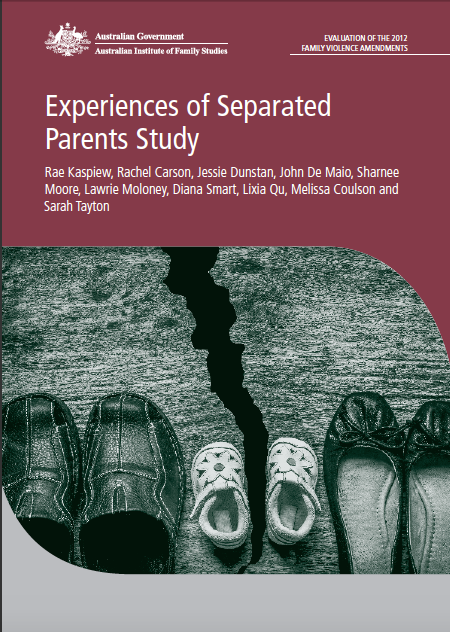
A recent Australian study has disproved the claim that men rarely experience violence, abuse, fear, control and coersion after separation.
In October 2015, the Australian Institute of Family Studies (AIFS) released its Experiences of Separated Parents Study - part of its evaluation of the 2012 family violence amendments by the Federal Government.
The study examined the experiences of two cohorts of parents, in 2012 and 2014, the latter a total of 6,079 parents who separated between 1 July 2012 and 31 December 2013, representing parents’ post-reform experience of the family law system.
The data indicate that family violence is a common experience among separated parents, with a majority of participating parents in both cohorts reporting either physical or emotional abuse.
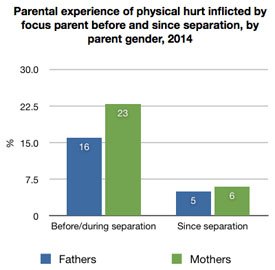
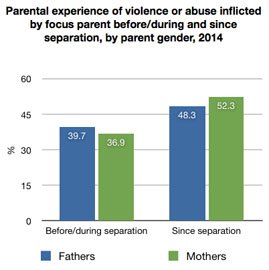
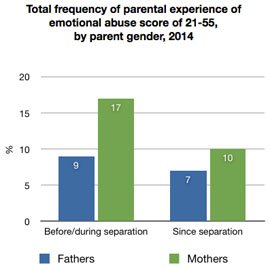
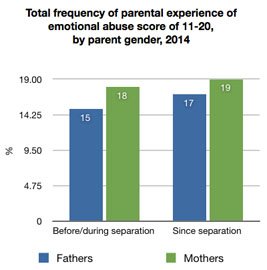
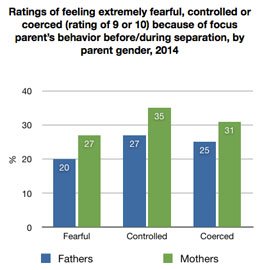
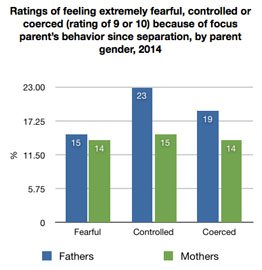
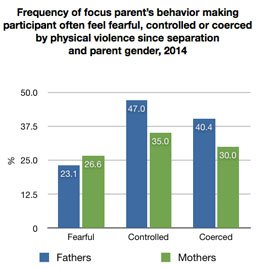

These figures make a lie of the oft-repeated claim that "men rarely experience post-separation violence" (for example, here, here, here, here, here, here, here and here). There was no statistically significant difference between fathers and mothers in the frequency of reporting having often felt fearful after experiencing physical violence or emotional abuse since separation, and fathers were statistically significantly more likely than mothers to report having often felt controlled or coerced after experiencing physical violence or emotional abuse since separation. When it came to severity, fathers were also more likely than mothers to report experiencing the highest level of fear, control and coersion (10 on a 10-point scale) that they felt arising from the focus parent’s behaviour since separation. Experiences of control and coersion were statistically significantly higher for fathers than mothers.
The study found that males (fathers) made up:
41.3% of parents who reported experiencing physical hurt (with or without emotional abuse) before/during separation
51.8% of parents who reported experiencing emotional abuse alone before/during separation. In 2 out of 11 types of emotional abuse, fathers reported experiencing abuse “often” at equal or higher rates than mothers.
34.6% of parents who reported experiencing between 21 and 55 incidents of emotional abuse before/during separation, and 45.5% of parents who reported between 11 and 20 incidents
42.6% of parents who reported experiencing the highest levels of severity of fear (9 or 10 on a 10-point scale) before/during separation, 43.5% of parents who reported experiencing the most severe control, and 44.6% of parents who reported experiencing the most severe coersion
45.5% of parents who reported experiencing physical hurt since separation
47.4% of parents who reported experiencing emotional abuse (with or without physical hurt) since separation. In 4 out of 13 types of emotional abuse, fathers reported experiencing abuse at equal or higher rates than mothers. In 7 out of 11 types of emotional abuse, fathers reported experiencing abuse “often” at equal or higher rates than mothers.
41.2% of parents who reported experiencing between 21 and 55 incidents of emotional abuse since separation, and 47.2% of parents who reported between 11 and 20 incidents
46.5% of parents who reported often feeling fearful after physical violence since separation, and 48.1% after emotional abuse alone
57.3% of parents who reported often feeling controlled after physical violence since separation, and 59.5% after emotional abuse alone
57.4% of parents who reported often feeling coerced after physical violence since separation, and 60.5% after emotional abuse alone
51.7% of parents who reported experiencing the highest levels of severity of fear (9 or 10 on a 10-point scale) since separation, 60.5% of parents who reported experiencing the most severe control, and 57.6% of parents who reported experiencing the most severe coersion.
The full report can be downloaded from aifs.gov.au/sites/default/files/publication-documents/efva-esps_0.pdf.
